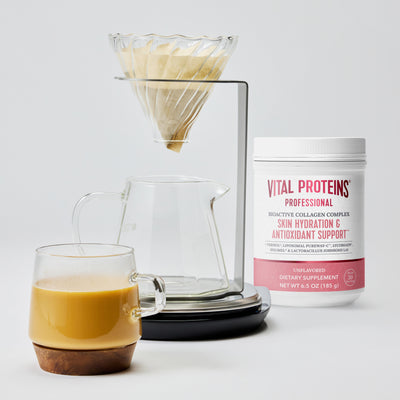From slugging to LED face masks and plenty in-between, there’s almost always a new skincare trend popping up. The latest? Skin cycling. If you’re into the idea of simplified skincare, then this one’s for you. We spoke with a couple of derms about what it is and how to do it, so keep reading to learn more about this buzzy skincare technique.

What is skin cycling?
The term “skin cycling” can be credited to NYC-based dermatologist Whitney Bowe, MD, and is a strategic method for cycling through your nighttime skincare routine to maximize results while minimizing irritation. Debra Jaliman, MD, board-certified dermatologist and assistant professor of dermatology at Mount Sinai’s Icahn School of Medicine, adds that while the idea is currently trendy, it’s not necessarily new— in fact it has been recommended by dermatologists for many years. “Essentially,different products are rotated throughout the week so that they do not irritate your complexion and help to make your skin look its best,” she explains.
Adarsh Vijay Mudgil, MD, medical director of Mudgil Dermatology, shares that a typical week of skin cycling might look like using an exfoliant on the first night, a retinoid or retinol on the second night, moisturizing on days three and four and then nothing at all for days five through seven. The four-night cycle approach and its highlights, plus a few additional tips for beginners can be found in this video by Bowe.
On night one, she suggests choosing a chemical exfoliant that includes acids vs. a physical exfoliant (steer away from those products which have textured, grainy particles), then moisturize after exfoliating. On night two, she says to pat skin dry after washing (damp skin when applying a retinol is a no-no) and that you only need a pea-sized amount of retinol or retinoid to cover the entire face, the same amount for the neck and about two peas worth of cream for the chest. Be sure to moisturize after. On nights three and four, Bowe says you can apply a hydrating serum to damp skin after cleansing and follow it up with a nourishing moisturizer.
What are the benefits of skin cycling?
As we mentioned above, one of the main benefits of skin cycling is that it helps prevent irritation or overuse of a product or ingredient.“Anytime you’re using products with active ingredients (i.e. salicylic acid, glycolic acid, retinol, etc.), you have to be careful to limit the amounts that you use, as well as the number of products with the active ingredients,” points out Jaliman. And not only can you irritate your skin with overuse of acids and retinoids, you can end up harming your skin barrier— all things we want to avoid.
Another benefit is that the routine provides a simple “less is more” kind of approach. “Rather than apply multiple products daily, which is what most people do, only one product is applied on the working nights — rest days allow the skin to recover in the most natural way possible,” Mudgil says, adding that there really are no drawbacks to this routine.
Can everyone try skin cycling?
Both Jaliman and Mudgil agree that all skin types can benefit from skin cycling, however, those with sensitive skin in particular may want to proceed with caution. “The potency of the exfoliant or retinol/retinoid may need to be reduced for those with sensitive skin,” highlights Mudgil. People with more sensitive complexions may also benefit from a “rest” day between the exfoliant and retinoid applications. Lastly, it’s important to point out that you should speak with your derm before trying any new type of routine or skincare products to be sure you’re doing what’s right for you.

















